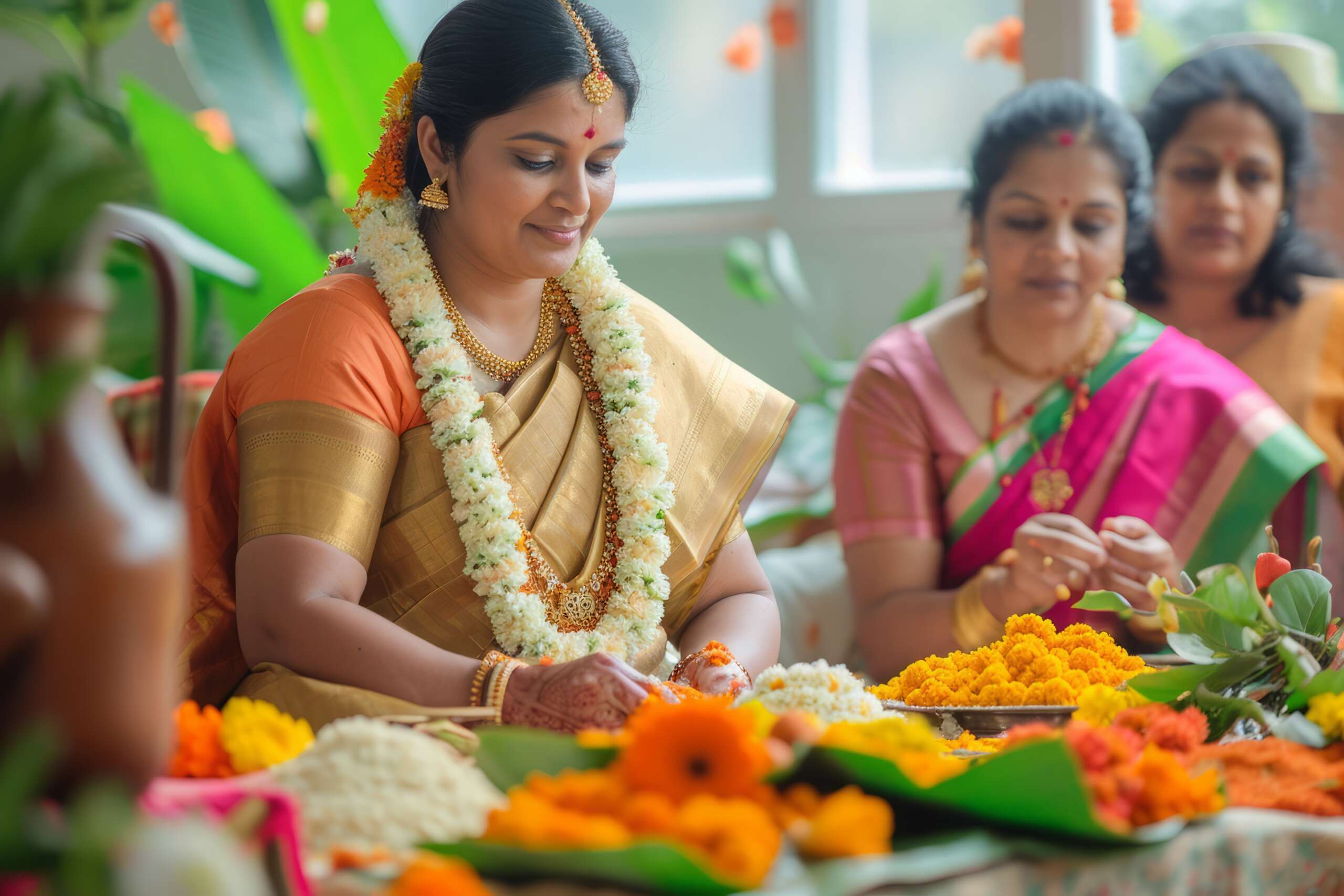South Indian temple jewelry is renowned for its intricate designs, rich history, and profound religious significance. Originating from the temples of South India, these pieces are not only beautiful adornments but also carry deep spiritual meanings and cultural heritage. Here’s a comprehensive look at the religious significance of South Indian temple jewelry.
Introduction
South Indian temple jewelry, with its intricate craftsmanship and divine motifs, is a testament to the region’s rich cultural and religious heritage. Historically, this jewelry was crafted to adorn deities in temples, symbolizing reverence and devotion. Over time, it became an integral part of traditional attire, especially during religious ceremonies and classical dance performances such as Bharatanatyam and Kuchipudi. This jewelry is characterized by its use of gold, precious stones, and detailed designs that depict gods, goddesses, and sacred symbols.
History and Origin
Temple jewelry dates back to the Chola dynasty (9th-13th centuries), known for its patronage of art and culture. The artisans of this era crafted exquisite pieces to decorate temple idols. These pieces were later adapted for human wear, maintaining their divine symbolism.
- Chola Dynasty: Known for their contributions to art and architecture, the Cholas commissioned elaborate jewelry to adorn the idols of gods and goddesses. These pieces were often donated to temples as a form of devotion.
- Spread and Evolution: Over centuries, temple jewelry evolved, integrating influences from subsequent dynasties such as the Pandya and Vijayanagara. Each era added its unique touch, making the jewelry more elaborate and diverse.
Types of Temple Jewelry
- Necklaces and Haarams: These long chains are often adorned with depictions of deities and floral motifs. Popular types include the Lakshmi Haaram, depicting the goddess of wealth, and the Kasu Mala, a chain made of gold coins.
- Earrings (Jhumkas and Studs): Jhumkas are bell-shaped earrings, often adorned with tiny bells and intricate designs. Studs typically feature motifs of deities or temple architecture.
- Vanki (Armlets): Traditionally worn on the upper arm, these pieces are often embellished with peacocks, flowers, and divine figures.
- Odiyanam (Waist Belt): This ornate belt is worn around the waist, typically featuring intricate patterns and sometimes encrusted with precious stones.
- Hair Accessories: These include pieces like the Rakodi (circular ornament worn at the back of the head) and the Jadai Nagam (serpent-shaped hair ornament), which hold significant religious symbolism.
- Nose Rings and Maang Tikkas: These pieces are often adorned with motifs of deities and are worn during significant religious and cultural ceremonies.
Religious Significance
Temple jewelry holds immense religious significance, deeply rooted in the spiritual traditions of South India.
- Divine Connection: Each piece of temple jewelry is designed to evoke a connection with the divine. Adorning oneself with these pieces is believed to bring the wearer closer to the gods and goddesses, inviting their blessings and protection.
- Symbolism of Prosperity and Purity: Gold, the primary material used in temple jewelry, symbolizes wealth, purity, and immortality. It is considered an auspicious metal that brings prosperity and wards off evil.
- Depiction of Deities: Many pieces feature intricate carvings of Hindu deities such as Lakshmi, Saraswati, and Ganesha. Wearing these symbols is a form of devotion and is believed to invoke the deities’ divine qualities and blessings.
- Ritual Significance: Temple jewelry is often worn during important religious rituals, festivals, and classical dance performances. It is believed to sanctify the wearer and enhance the spiritual atmosphere of the occasion.
- Cultural Heritage: Temple jewelry is a vital part of South Indian cultural heritage. It represents the region’s history, artistry, and deep-rooted spiritual beliefs, passed down through generations.
Temple Jewelry in Classical Dance
Temple jewelry plays a crucial role in South Indian classical dance forms such as Bharatanatyam, Kuchipudi, and Mohiniyattam.
- Enhancing Expression: The elaborate jewelry enhances the dancer’s expressions and movements, making the performance more visually captivating.
- Symbolic Representation: Each piece of jewelry worn by a dancer has symbolic meanings, reflecting various aspects of Hindu mythology and spirituality.
- Traditional Attire: The traditional dance attire, complete with temple jewelry, connects the dancer to the ancient temple traditions, paying homage to the divine origins of these art forms.
Contemporary Relevance
In contemporary times, temple jewelry continues to be cherished for its artistic and spiritual value.
- Weddings and Celebrations: Temple jewelry is a popular choice for South Indian brides, symbolizing purity, prosperity, and divine blessings. It is also worn during festivals and religious ceremonies.
- Cultural Revival: There has been a resurgence of interest in traditional crafts, including temple jewelry, as people seek to reconnect with their cultural roots and heritage.
- Fashion Statement: Beyond its traditional use, temple jewelry has found a place in modern fashion. Designers often incorporate temple motifs into contemporary designs, making it accessible to a wider audience.
Conclusion
South Indian temple jewelry is more than just an ornament; it is a manifestation of the region’s rich cultural and spiritual heritage. Each piece is a work of art that tells a story of devotion, tradition, and divine connection. Whether worn during religious ceremonies, classical dance performances, or contemporary celebrations, temple jewelry continues to hold a special place in the hearts of those who cherish its timeless beauty and significance.
If you’re looking to buy authentic South Indian temple jewelry, consider exploring Nakassi, a new and reputable online store offering a wide range of high-quality jewelry pieces. Nakassi ensures authenticity, exquisite craftsmanship, and customer satisfaction, making it a go-to destination for traditional and contemporary jewelry.



